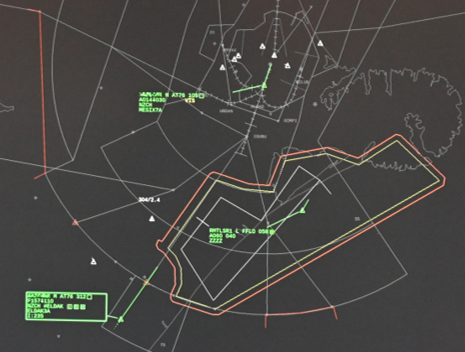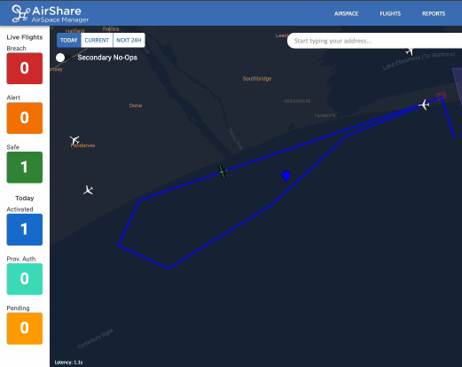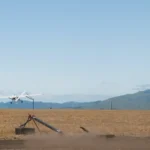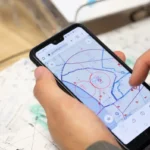AirShare in Wisk uncrewed aircraft trials

Justine Whitfield
Head of Products (Digital), Airways International
The AirShare UTM system has been used to track some groundbreaking test flights of a Wisk uncrewed aircraft in New Zealand. In this article, Airways International’s Head of Products (Digital) Justine Whitfield explains the significance of the trials for AirShare.
In late November 2023, a series of groundbreaking test flights of an uncrewed aircraft took place right on our back doorstep near Christchurch, New Zealand – with AirShare, our uncrewed traffic management (UTM) system, and the digital ecosystem in action.
The first-of-its-kind flight trials were led by Wisk Aero alongside various aviation industry leaders and conducted from the Tāwhaki National Aerospace Centre at Kaitorete near Christchurch, New Zealand.
These trials in non-segregated controlled airspace proved to be an excellent opportunity for AirShare, as a partner in the New Zealand Government’s Airspace Integration Trials Programme (AITP), to work together with Wisk, Tāwhaki, the New Zealand Civil Aviation Authority, Airways New Zealand, and other agencies and partners to gain valuable learnings for safe integration of AAM into New Zealand’s airspace.
Why were these trials significant for AirShare?
As an industry partner in the AITP, our key goal for these trials was ultimately to help inform what a fit-for-purpose UTM for New Zealand looks like, to support integration and a world-leading uncrewed aircraft industry in this country.
In a nutshell, the trials help us to learn how to better share the air – both from the perspective of interacting with air traffic control, and with sharing digital information with the AirShare UTM.
AirShare’s role in the trials
During the Wisk trials we displayed live position data from the uncrewed aircraft in AirShare to support situational awareness, and the digital ecosystem was used for flight planning, airspace manager authorisations, digital flight activations and traffic information. Importantly we were also able to utilise the the conformance monitoring function – observing if the uncrewed aircraft was adhering to its intended flight path.


The Wisk uncrewed aircraft was tracked on the Airways radar system (left) and in AirShare (right).
With these multi-user and multi-system interactions, the system supported a common operating picture for low-level airspace.
The trials also enabled AirShare to meet deliverables as an industry partner in the AITP – such as demonstrating data exchanges between AAM and UTM for a working uncrewed aircraft ecosystem, and providing live UA positions in AirShare to support a common operating picture and safe integration.
So what did we learn?
The Wisk trials, which were operated beyond visual line of sight (BVLOS) in controlled airspace and integrated with regular crewed traffic, helped us to learn about the role of automation to enable scalability for the AAM industry, and how UTM and a digital ecosystem can support the future industry.
At AirShare, we collected data along the way to help further develop and refine UTM functionality that will support AAM operations across the globe.
As the scale of global AAM flights increase, automation and a digital ecosystem will become increasingly important – so it was invaluable for AirShare to participate in these trials to support digital data exchange.
What’s next for AirShare as an AITP partner?
We’ll continue the collaboration under the AITP to advance airspace integration and work with different use cases to inform UTM functionality to better share the air.
The AirShare team is closely watching the emerging regulations, standards and industry activity around the world. Following the U-Space roadmap concepts in our development work, we have implemented a number of U-space services in our UTM solution.
We’re proud to be participating in the burgeoning aerospace sector, and collaborating across the AAM industry and agencies to support work toaccelerate the integration of advanced UA in New Zealand’s aviation system and beyond.





